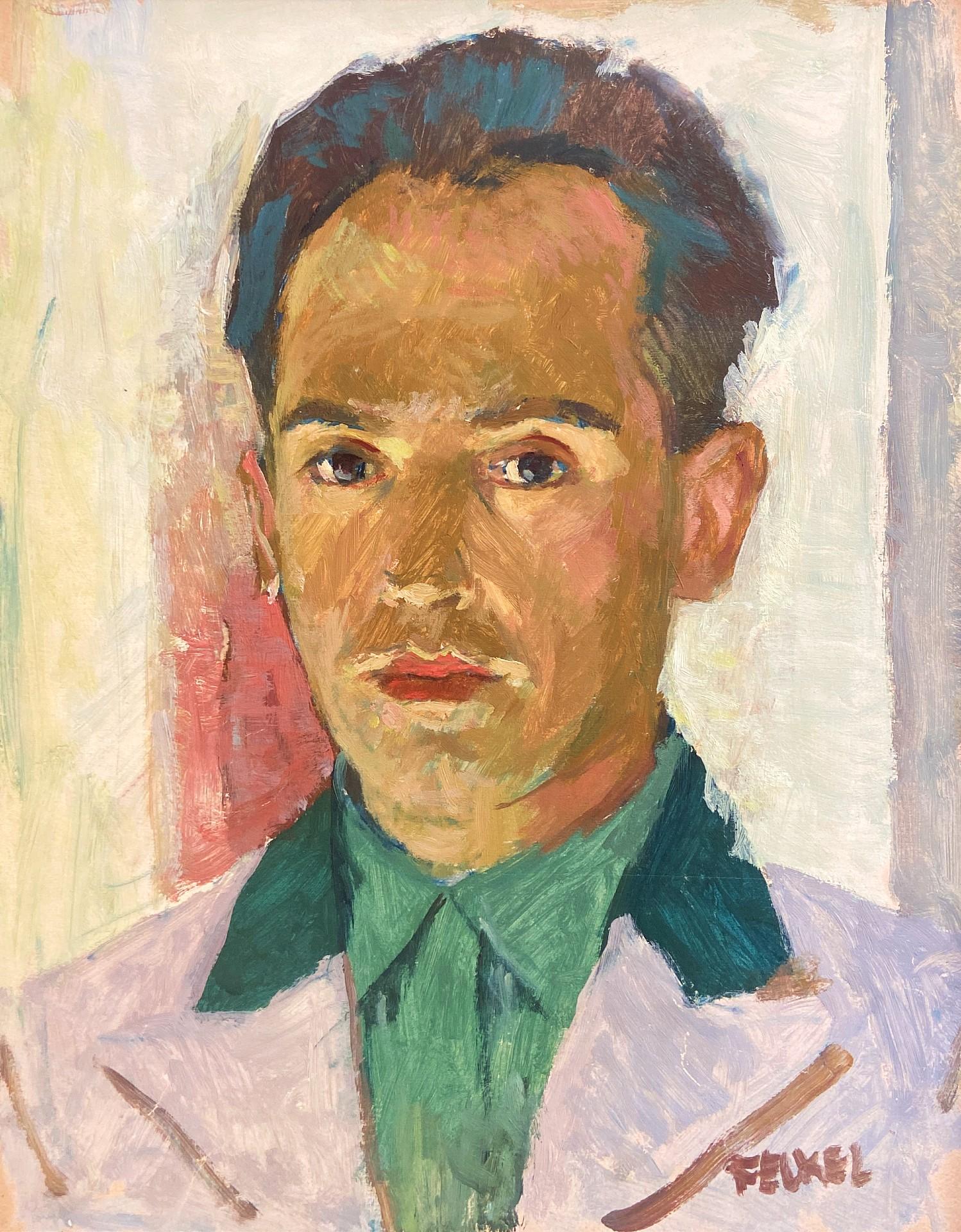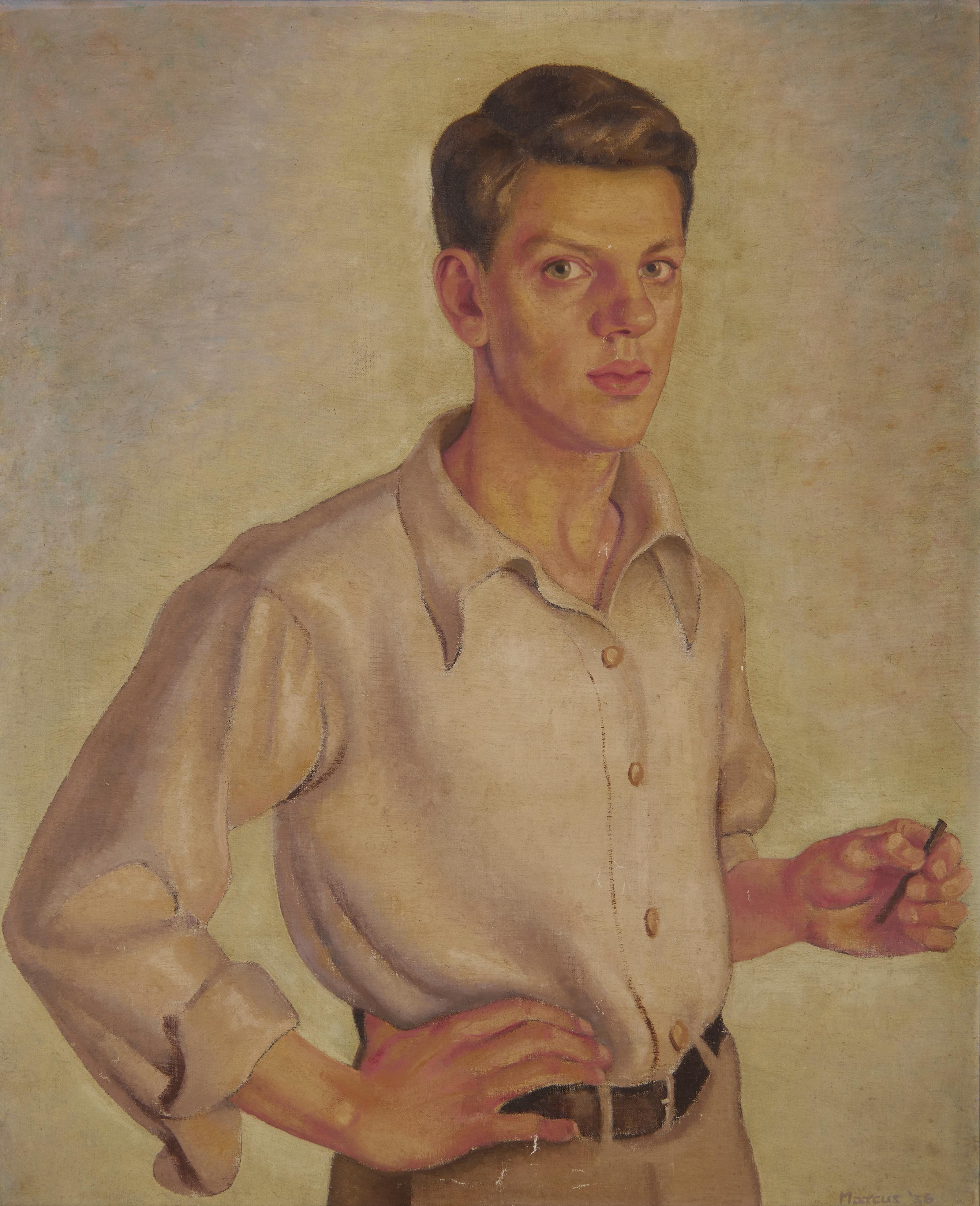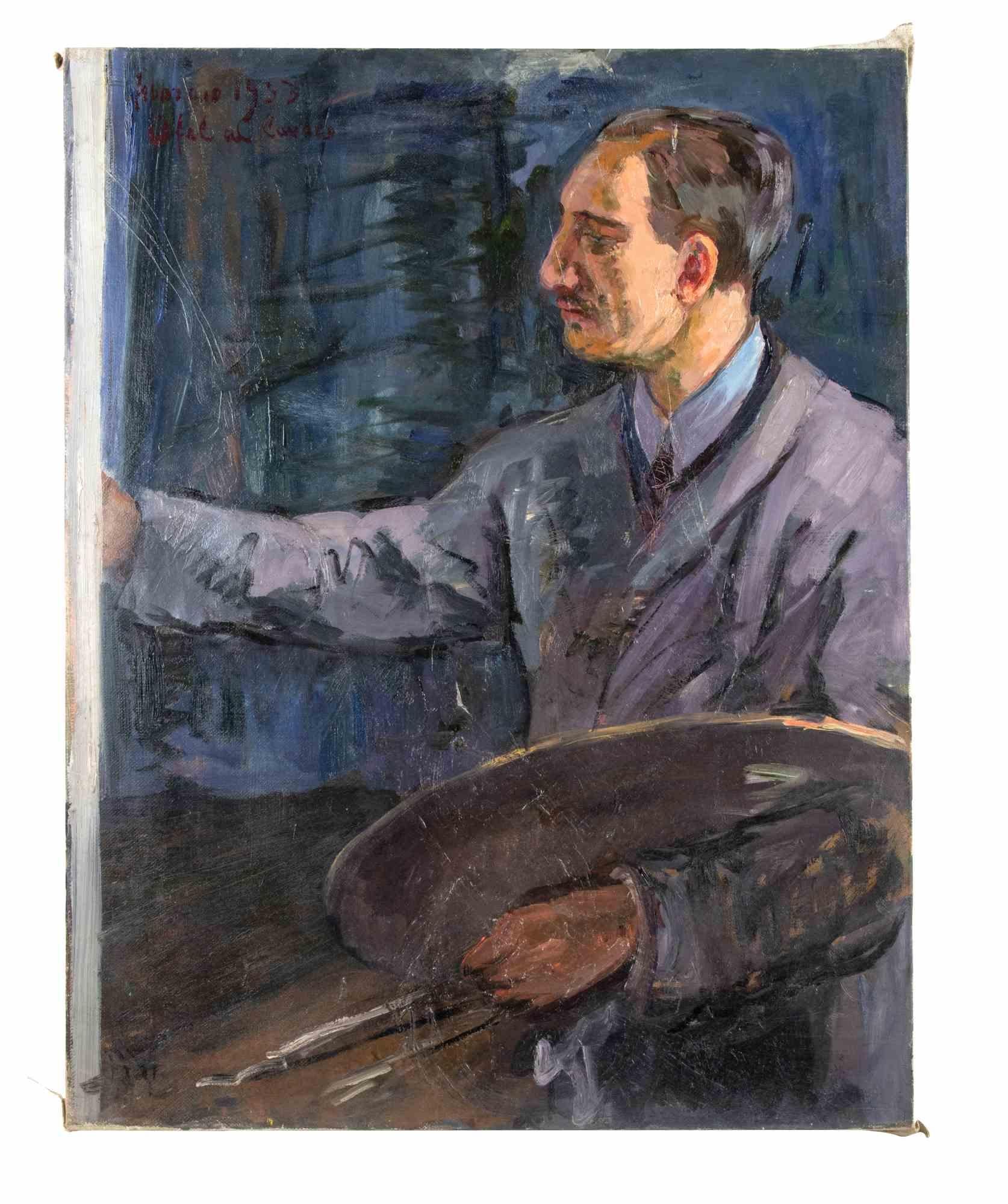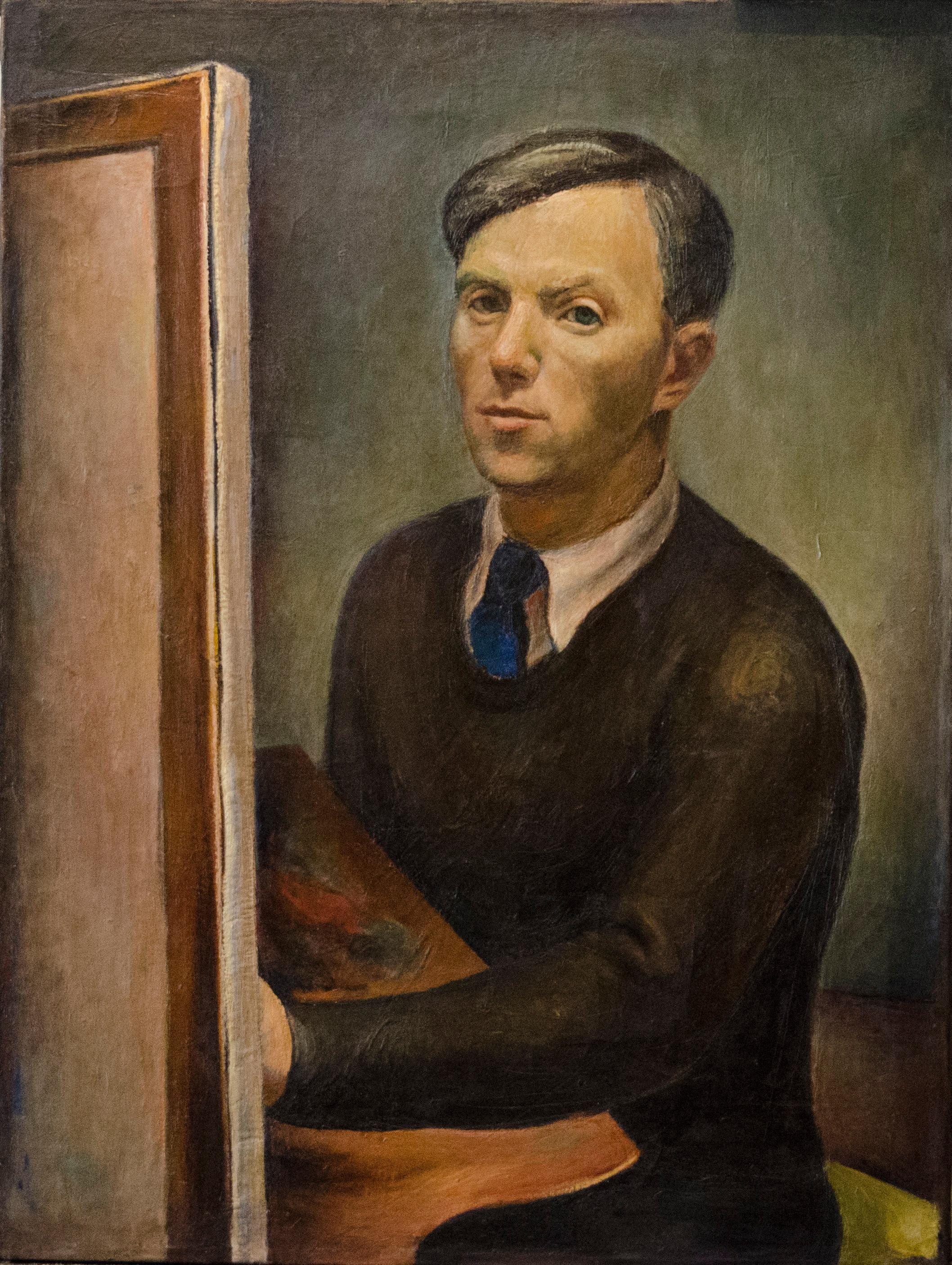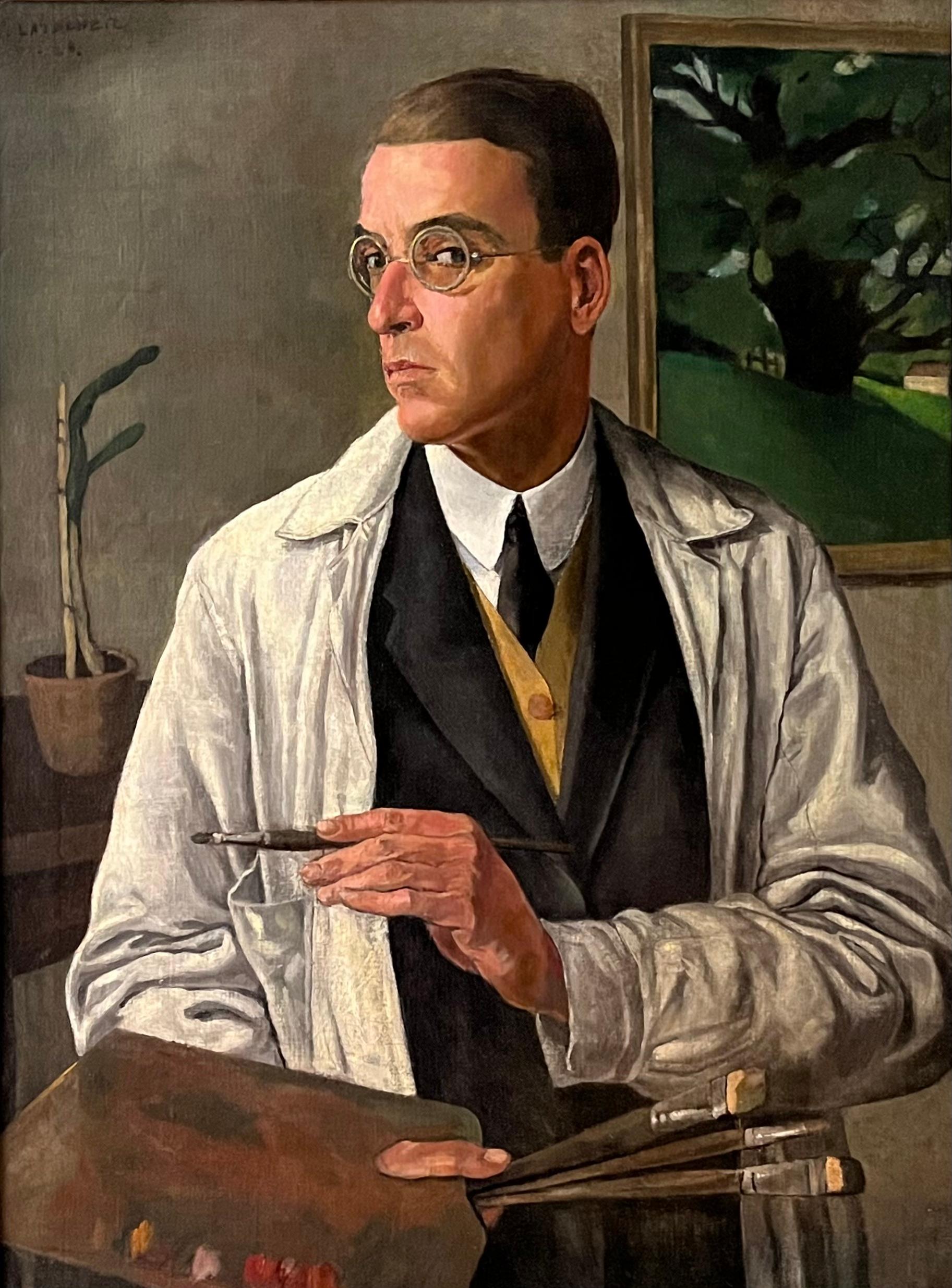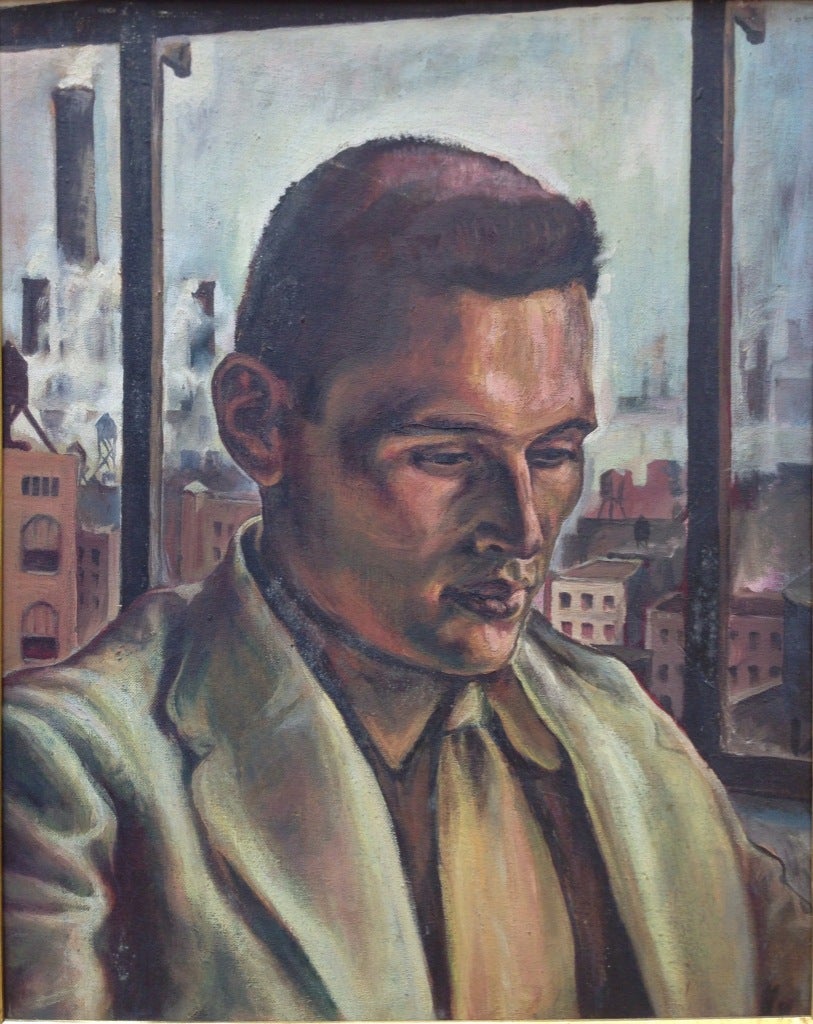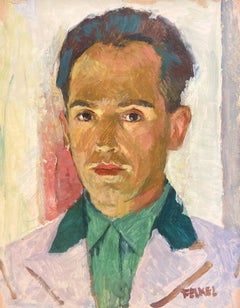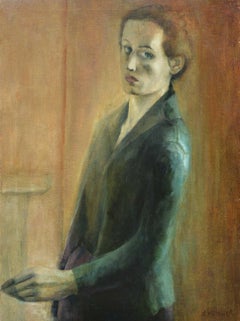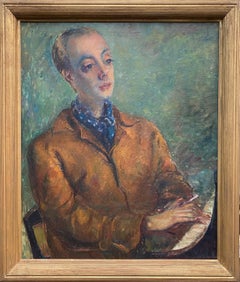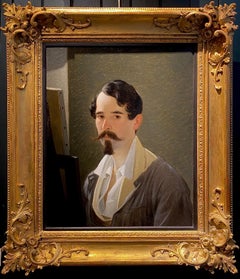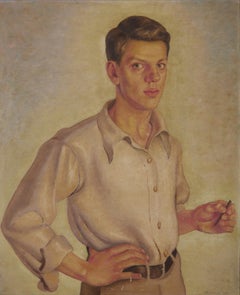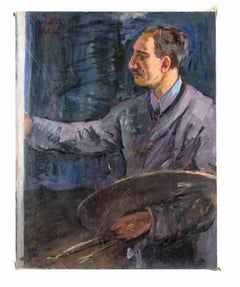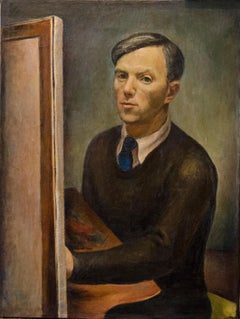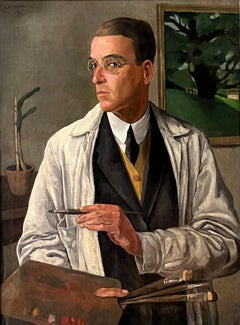Items Similar to Self Portrait in a Mirror with Artist's Tools, Oil on canvas, Signed, Polish
Want more images or videos?
Request additional images or videos from the seller
1 of 5
Joseph BielSelf Portrait in a Mirror with Artist's Tools, Oil on canvas, Signed, Polish
$7,552.17
£5,500
€6,437.03
CA$10,418.75
A$11,453.07
CHF 6,019.21
MX$139,081.95
NOK 75,088.09
SEK 71,140.69
DKK 48,041.19
About the Item
Oil on canvas, signed bottom left
Image size: 24 x 20 inches (61 x 51 cm)
Contemporary style hand made frame
Joseph Biel
Joseph Biel was a painter and photographer who was born in Grodno, Poland (later to be Russia) on October 27 1891. One of Biel's formative experiences was witnessing Russia's 1905-6 pogroms of Jews in Bialystock where a hundred people were murdered. The sights of the pogrom were etched into his memory, influencing his world view and future work.
He fled his home and studied at the Russian Academy in Paris. Prior to immigrating to America, Biel had lived in England, France, and Australia—in this last location performing in plays and founding a Jewish library in Melbourne.
In New York he met his wife, the artist Lena Gurr; they married in 1931. His paintings were featured in solo shows at the Brooklyn Museum (1932) and the ACA Gallery (1934, 1936, 1939); they also appeared at the 1934 Whitney Biennial, the 1939 World’s Fair and a 1943 Brooklyn Museum show along with his wife Lena and NDG artist Joseph Lomoff. Among others he also studied with the artist George Grosz.
Biel was employed by the Public Works Art Project in 1934, his painting “Angles of New York” City assigned to the office of New York Borough President and “On the Ferry” to the Commissioner of Docks. As Lena Gurr later recalled, “Joseph Biel was always a conscious social painter. He couldn't be otherwise, for, after witnessing a pogrom and other social ills in his youth in Grodno, Poland (later Russia) he was burning with hatred for oppression of all kinds… He believed that painting was the best weapon an artist had to express his inner thoughts and feelings, and that the artist should use that weapon to expose social injustice”.
Joseph Biel had a stroke in 1943 and shortly after this he passed away in New York.
- Creator:Joseph Biel (1891-1943, American)
- Dimensions:Height: 24 in (60.96 cm)Width: 20 in (50.8 cm)
- More Editions & Sizes:1 of 1Price: $7,552
- Medium:
- Movement & Style:
- Period:
- Condition:
- Gallery Location:London, GB
- Reference Number:1stDibs: LU52414262112
About the Seller
5.0
Vetted Professional Seller
Every seller passes strict standards for authenticity and reliability
Established in 2007
1stDibs seller since 2014
82 sales on 1stDibs
Typical response time: 4 hours
- ShippingRetrieving quote...Shipping from: London, United Kingdom
- Return Policy
Authenticity Guarantee
In the unlikely event there’s an issue with an item’s authenticity, contact us within 1 year for a full refund. DetailsMoney-Back Guarantee
If your item is not as described, is damaged in transit, or does not arrive, contact us within 7 days for a full refund. Details24-Hour Cancellation
You have a 24-hour grace period in which to reconsider your purchase, with no questions asked.Vetted Professional Sellers
Our world-class sellers must adhere to strict standards for service and quality, maintaining the integrity of our listings.Price-Match Guarantee
If you find that a seller listed the same item for a lower price elsewhere, we’ll match it.Trusted Global Delivery
Our best-in-class carrier network provides specialized shipping options worldwide, including custom delivery.More From This Seller
View AllSelf Portrait, 20th Century Jewish Artist Oil Painting
By Carl Felkel
Located in London, GB
Oil on board, signed bottom right
Image size: 13 1/2 x 17 inches (34.25 x 43 cm)
Contemporary frame
The Artist
Painter Carl Friedrich Felkel was born in 1896, in Stockerau, near Vienna, Austria-Hungary (now Austria) and was probably of Jewish descent. He initially studied under Walter Thor...
Category
Mid-20th Century Modern Portrait Paintings
Materials
Oil, Board
Self Portrait, Mid-20th Century Oil
Located in London, GB
Sheila Holland
1932-2002
Self Portrait
Oil on canvas, signed lower right
Image size: 30 x 22 inches
This is a wonderfully dynamic self portrait by the female artist Shelia Holland. ...
Category
Mid-20th Century Portrait Paintings
Materials
Oil
Portrait of Stanley Bate, 20th Century Musician
Located in London, GB
Oil on canvas
Image size: 24 x 29 inches (61 x 73.5 cm)
Contemporary style gilt frame
Provenance
From the estate of the artist, Clara Klinghoffer
This portrait is by an artist who propelled rapidly into the limelight after her first solo exhibition in 1920, at the age of 19, with the Daily Graphic naming her as the 'Girl Who Draws Like Raphael'. Yet today Clara Klinghoffer's name is little know.
Klinghoffer's early success resulted in numerous portrait commissions, including this one of the English composer Stanley Bate. The bold use of colour and naive execution of this portrait clearly reveals the modernist influence of fellow Jewish artists such as Bernard Meninsky, Jacob Kramer and Mark Gertler...
Category
20th Century Modern Portrait Paintings
Materials
Canvas, Oil
Self Portrait. Original Oil Painting Austrian 19th Century
Located in London, GB
Joseph Weidner
Austrian 1801 - 1870
Self Portrait
Oil on canvas, signed lower left
Image size: 23 x 19 inches (58.5 x 48.5 cm)
Original gilt swept fra...
Category
1860s Vienna Secession Portrait Paintings
Materials
Oil
Self Portrait
Located in London, GB
Juan de Echevarría y Zuricalday
Self-Portrait
1875-1931
Oil on card on board, signed and titled verso
Image size: 16 3/4 x 11 2/3 inches (42.5 x 29.5 cm)
Inscription verso:
"Auto re...
Category
Early 20th Century Portrait Paintings
Materials
Oil, Board
Bernard, Self Portrait
Located in London, GB
English School
Bernard, Self Portrait
1950s
Pencil and sepia chalk on paper
Image size: 9 1/2 x 13 1/2 inches (24 x 34.3 cm)
Handmade contemporary frame
This imaginative self-portra...
Category
1950s Portrait Drawings and Watercolors
Materials
Paper, Chalk, Pencil
You May Also Like
Self Portrait of the Artist, Early 20th Century Oil Painting, Cleveland Artist
By Kenneth Marcus Hugh
Located in Beachwood, OH
Kenneth Marcus Hugh (American, 1916-2011)
Self Portrait
Oil on canvas
Signed lower right and dated ’36
33 x 27 inches
39 x 33 inches, framed
Kenneth Marcus Hugh was born August 14, ...
Category
1930s Portrait Paintings
Materials
Oil
Self Portrait - Oil Paint by Antonio Feltrinelli - 1930s
By Antonio Feltrinelli
Located in Roma, IT
Self portrait is a modern artwork realized by Antonio Feltrinelli in 1930s.
Mixed colored oil painting on canvas.
Not signed.
Antonio Feltrinelli (Milan, 1887 – Gargnano, 1942)
He...
Category
1930s Modern Figurative Paintings
Materials
Oil
"Portrait of an Artist"
By Eugene Ivanoff
Located in West Hollywood, CA
Presenting an exceptional early painting by Russian/American artist Eugene Ivanoff (1897-1954.)
"Portrait of an Artist", is a unique, original oil on canvas, signed, painted c.1935,...
Category
1930s Modern Figurative Paintings
Materials
Oil
Self-portrait of the artist, 1928
Located in PARIS, FR
Rudolf Latcher
Self portrait, 1928
Oil on canvas
97,3 x 72 cm (106 x 81,5 x 4,5 cm with frame)
Signed and dated upper left
Category
1920s Portrait Paintings
Materials
Canvas, Oil
"Portrait of Dr. Monroe Mufson"
By Joseph Biel
Located in Southampton, NY
Unsigned ; attributed to Joseph Biel
Good friend of Dr. Mufson
View is from New York University School
of Medicine.
Overall size with original frame 25.5 x 21 in.
Category
Mid-20th Century American Modern Portrait Paintings
Materials
Oil, Board
$2,280 Sale Price
20% Off
George Weissbort (1928-2013) - 20th Century Oil, Self Portrait with Paintbrush
By George Weissbort
Located in Corsham, GB
A self portrait by the artist George Weissbort (1928-2013). Unsigned. (Provenance: Studio Sale, George Weissbort). On board.
Category
20th Century Portrait Paintings
Materials
Oil
